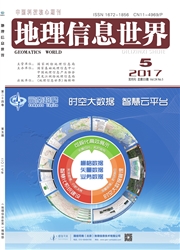

 中文摘要:
中文摘要:
为了研究采样点数日对反距离加权插值结果的影响,以面积为2.076×10^5km。的自俄罗斯为研究区域,采用数目逐渐变化的采样点作为实验数据,通过交叉验证方法,得到了采样点数目与插值精度之间的关系。结果表明:随着采样点数日减少,插值误差呈现先缓慢上升后迅速上升再缓慢上升的趋势。就本组数据而言,当采样点逐渐减少到约为总采样点数目的70%左右,插值的质量会发生突变。计算采样点的密度,得出每100km。采0.9-1.3个点(即每76-109km2采集1个点)的情况下,捕值精度变化不大。鉴于研究所得,在实际的生产生活中.可供大区域插值时。采样方案设计参考。
 英文摘要:
英文摘要:
In order to research the impact of the sampling point number on the precision of the inverse distance weighted interpolation, we take the territory of Belarus as research area whose acreage is two hundred thousand seven thousand and six hundred square kilometers. By gradually changing the number of the sampling points which is regarded as experimental data, we adopt cross-validation metilod to acquire the quantitative relationship between the sampling point number and the interpolation precision. The results illustrate that with the decreasing number of sampling points, interpolation error shows the trend that it will rise slowly in the beginning, and then the rise accelerate, eventually it rises slowly again. As concerned of this group of data, when the number of the experimental points gradually reduces to about seventy percent of total of the sample points, the interpolation quality will mutate. Through calculating density of sample points, we can get a conclusion that when of sampling point number is from 0.9 to 1.3 per 100 km2 (that is to say one sampling point is collected per 76-109 km2), the interpolation precision changes slightly. According to this study, during the daily production, the result will be a reference for the interpolation of large area.
 同期刊论文项目
同期刊论文项目
 同项目期刊论文
同项目期刊论文
 期刊信息
期刊信息
